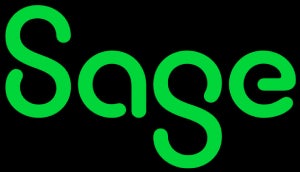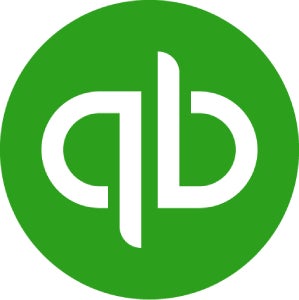Whether you’re a local contractor with a small crew or a general contractor on a large-scale commercial build team, one thing all contractors have in common is the drive to pick up a hammer instead of a pen.
Time is money, after all, and time spent completing financial paperwork is time spent away from the job site.
It’s one of the main reasons why, for so long, the construction industry may have struggled more than other sectors to migrate to digital systems. It often feels so much easier to drop a bag full of receipts on a CPA’s desk at the end of a job and pay them to sort it out. But software has come a long way, and the right accounting tool can turn the job from painful to painless.
Top accounting software comparison
To help you better identify what kind of accounting software will help you simplify your financial efforts and streamline your business processes, we’ve prepared a handy comparison list. Take a look at how each of these providers stacks up, and see how they match the needs of your crew.
| Starting price | Job costing | Subcontractor management | Hosting | Payroll | ||
|---|---|---|---|---|---|---|
| Sage 300 CRE | By quote | Yes | Yes | On-premises | Add-on | Try Sage |
| Jonas Premier | $299/user/mo. | Yes | Yes | Cloud | No | Try Jonas Premier |
| QuickBooks Enterprise | $1,830/yr. | Yes | No | On-premises (cloud via add-on) | Premium /add-on only | Try QuickBooks |
| Sage 100 Contractor | Custom quote | Yes | Yes | On-premises | Add-on | Try Sage |
| Buildertrend | $199/mo. | Yes | Yes | Cloud | No | Try Buildertrend |
| Sage Intacct Construction | Custom quote | Yes | Yes | Cloud | Add-on | Try Sage |
| RedTeam | $450/mo. | Yes | Yes | Cloud | No | Try RedTeam |
Sage 300 CRE: Best overall

While Intuit products are often top-of-mind when it comes to financial software, Sage is one of the few providers with a catalog of digital accounting tools that can rival that industry giant. What’s more, and more to the point of this list, Sage boasts far more in regard to construction-specific solutions. That’s all to say, you’ll see this vendor a few times in this list.
First up is Sage 300 CRE. This Sage product targets larger enterprises in the construction and real estate (CRE) sectors. It’s designed as an on-premises solution, so teams will need the infrastructure to host it themselves. But for teams that can facilitate that, Sage 300 brings a host of critical functions to the table, allowing crews to manage finances, projects, teams, schedules and a lot more.
Pricing
All Sage products require a custom quote, so you’ll need to contact the sales team for pricing.
Features
- General ledger, with consolidation, intercompany transactions and more.
- Advanced AP and AR functions, including tax withholdings.
- Project and job costing, integrated payments, project management and other tools important for running a construction business.
- Add-on tools available to expand functionality, including payroll, time tracking and CRM to name a few.
Pros
- More affordable pricing than many of its peers.
- Low-cost, minimal effort setup.
- Construction-specific functionality native to the platform.
- Designed with larger construction crews and multi-org teams in mind.
Cons
- Lack of pricing transparency.
- Requires on-premises setup.
- Some larger enterprises may find certain advanced features missing.
Jonas Premier: Best construction-specific software

A lot of businesses can make do with a general-purpose financial app. For the construction industry, though, there are far too many quirks and details that most of the off-the-shelf tools can’t accommodate.
Like so many of the tools used on the job site, the best software for construction finance is one that’s specialized to do the job. This, in particular, is where Jonas Premier shines. Unlike the other picks on this list, Premier only offers products that meet the needs of contractors, home builders, land developers and construction management teams.
Pricing
All subscriptions are billed annually, and each comes with an associated implementation fee:
- Starter: $299 per user per month, with a $15,000 implementation fee.
- Premium: $249 per user per month, with a $25,000 implementation fee.
- Enterprise: $199 per user per month, with a $50,000 implementation fee.
Features
- Native tools for project management, subcontractor management and document management.
- Time tracking, signatures and approvals and change orders.
- Accounting, accounts receivable and accounts payable, job costing, forecasting, reporting and more.
Pros
- Comprehensive features cover nearly all necessary and related financial functions for construction teams.
- Cloud-based hosting makes it easy to access the tools you need from anywhere.
- Native subcontractor, team, project and time management simplifies tracking project costs.
Cons
- Startup costs may be a barrier to entry for smaller teams.
- No native payroll function.
- Limited functionality outside of construction-specific use cases.
QuickBooks Enterprise: Best enterprise accounting software

It’s admittedly difficult to discuss financial software in nearly any vertical without mentioning QuickBooks or one of its companion tools in the Intuit family. And there are good reasons for their market visibility. Few apps can boast the depth or breadth of functionality that QuickBooks can offer — or the expansive list of integrations such an industry mainstay brings to the table. In many ways, QuickBooks can more fully meet the needs of enterprise-level construction organizations than many other solutions.
Pricing
- Gold: $1,830 per year.
- Platinum: $2,250 per year.
- Diamond: $4,400 per year.
Features
- Order management.
- Job costing.
- Advanced pricing and reporting.
- Payment management.
- Extensive add-on list, including cloud access, payroll, time tracking and more.
Pros
- Covers a more comprehensive offering of financial responsibilities than most in the space.
- Flat pricing structure helps limit subscription costs.
- Designed to support native payroll, cloud access, inventory management, multi-company management, time-tracking and more.
Cons
- Many advanced functions are add-ons with additional fees.
- Subscription-tier starting prices exclude many features, like additional user licenses, cloud access, etc.
- Despite a broad feature set, QuickBooks is not purpose-built for construction use cases.
For more information, read the full QuickBooks Enterprise review.
Sage 100 Contractor: Best for microbusinesses

Aimed at smaller construction teams, Sage 100 Contractor provides many of the same benefits and tools included in its larger offerings. Not every organization needs multi-company and inter-company features, but nearly every contractor needs a more effective way to price jobs, track expenses and measure profitability over time. Sage 100 does just that for contractors running a more close-knit operation.
Pricing
All Sage products require a custom quote, so you’ll need to contact the sales team for pricing.
Features
- Designed with scalability in mind, facilitating and easing organizational growth.
- Digital tools for general ledgers, accounts receivable and accounts payable, credit card processing, invoicing and more.
- Full support for payroll and time tracking.
- Deep options for customizations and integrations.
Pros
- More affordable pricing than many of its peers.
- Low-cost, minimal-effort setup.
- Construction-specific functionality native to the platform.
- Designed with smaller construction teams in mind.
Cons
- Lack of pricing transparency.
- Requires on-premises setup.
- Some core features require add-ons.
- Not well suited to larger crews.
Buildertrend: Best end-to-end solution

While office professionals in B2B industries may have the time and patience to deal with expansive tech stacks, contractors and construction teams usually don’t. That’s why Buildertrend’s end-to-end functionality makes perfect sense.
By offering so many features in one interface, Buildertrend minimizes wasted time, effort and energy that would otherwise be spent trying to bring a poorly optimized collection of apps to heel.
Pricing
- Essential: $199 for the first month (and $499 per month after that).
- Advanced: $499 for the first month (and $799 per month after that).
- Complete: $799 for the first month (and $1,099 per month after that).
Features
- Unlimited projects and users with every subscription tier.
- Hassle-free integrations with a host of third-party apps.
- Project management, subcontractor management, time and task management and more.
- Native email marketing, messaging tools, customer portal and more.
Pros
- A veritable buffet of construction-specific tools, features and functions.
- Added features that help simplify and streamline work for busy crews (like email marketing).
- Supports integrations with popular payroll apps.
Cons
- No native payroll features.
- Multiple features require Advanced or Complete subscriptions (including subcontractor payments).
Sage Intacct Construction: Best for comprehensive accounting

Our third Sage offering on the list, Sage Intacct Construction, is its enterprise-grade solution tailored to the construction industry. Offering everything that Sage 100 and Sage 300 do plus cloud hosting, AI-powered accounting and analytics and a whole lot more, it’s no wonder why it’s the only AICPA-recommended solution in the space.
Pricing
All Sage products require a custom quote, so you’ll need to contact the sales team for pricing.
Features
- Accounts receivable and accounts payable, advanced analytics and an AI-enabled, “intelligent” general ledger.
- Fully interoperable with other Sage products.
- Available add-ons for payroll, HR, ERP and more.
Pros
- More affordable pricing than many of its peers.
- Low-cost, minimal-effort setup.
- Construction-specific functionality native to the platform.
- Cloud hosted and remotely accessible.
Cons
- Lack of pricing transparency.
- Some critical functions are relegated to distinct add-ons, driving up subscription costs.
- Some larger enterprises may find certain advanced features missing.
RedTeam: Best for project management

For many contractors, office work can seem like a distraction from their real job, in part because coordinating, managing and directing work on the job site is a full-time responsibility (and then some). This is where RedTeam comes in. With its three distinct software solutions, each targeting different portions of construction management, RedTeam can turn the complex and difficult work of overseeing one or more builds into something more akin to white collar project management, giving contractors more control with less effort.
RedTeam offers three different products: RedTeam Go, RedTeam Flex and Fieldlens by RedTeam. For the purposes of this comparison, we’re focusing on RedTeam Flex.
Pricing
- RedTeam Flex Elastic: $500 per month, billed monthly.
- Custom pricing by request.
Features
- Paperless management processes, reducing delays and human errors.
- Real-time collaboration via mobile and remote access for the whole crew.
- Subcontractor management and collaboration built natively into the system with TeamPlayer (included in the RedTeam Flex subscription).
Pros
- More robust project management and subcontractor management than any other provider on this list.
- Robust, construction-specific functionality.
- Full integration with Fieldlens, empowering crews to help shoulder some of the work of documenting, reporting and collaborating.
Cons
- Financial features are less robust than those of its peers on this list.
- Full ROI dependent on combined RedTeam Flex and Fieldlens subscriptions.
Key features of construction accounting software
As mentioned above, and as you’re already intimately familiar with, crunching the numbers for any given build project is far from straightforward. Accurate estimates and bids, effective expense tracking and successful reporting and analysis of profitability are just the start, and those alone can be a nightmare to navigate.
We put together the list above to help point you in the direction of tools that will ease those pain points, but to further clarify where some of the sticking points are, we’ve taken the liberty of outlining some of the most noteworthy features to look for.
Job costing
Getting accurate financial figures — and turning an actual profit — all starts with estimating and tracking expenses. The more accurate a bid or estimate, the fewer adjustments will be needed for the final invoice. And the more accurate the expense tracking, the better the accuracy of the estimates. It’s a feedback loop that all leads to one major result: If you know how much it costs to do what you’re doing, you can more effectively price the work and earn what you’re worth.
Subcontractor management
One thing just about every contractor has in common is subcontractors. While there are a few true jack-of-all-trades who can build a home from the ground up on their own, the vast majority will rely on any number of specialists: electricians, plumbers, tile setters, roofers — the list goes on. Managing, tracking and financing all of that subcontracted labor is a major task (and a major headache), so any solid software should make that process easier.
Software hosting
This one may seem a bit out of place, but with the Sage entries above, we have to point to it again. Just in case terms like “on-premises,” “hybrid architecture” and “cloud-native” are unfamiliar in any way, here’s the long and short of it:
On-premises solutions are best for teams that work in a central location — you essentially download the software to your local computers or servers and can only access it within that internal system. Often, you have to update and maintain the software yourself, but it’s touted as a more secure option if you’re worried about unfriendlies accessing your business information.
Cloud solutions work over the internet and can be accessed anywhere, as long as you have an internet connection. Teams find this particularly useful if they’d like to use tools on the go, such as on job sites or meeting with clients outside of the office. And if you forget your laptop, no worries — you can borrow someone else’s and log in through the web browser.
Hybrid architecture is a combination of both, though the setup may vary depending on the solution.
Project management
OK, maybe project management tools aren’t a strict necessity for crews. After all, construction teams have done without them for, well, thousands of years. But here’s the thing: It’s one more detail you have to track manually, and it adds to your workload (and likely the workloads of a number of other crew members). The right software, meanwhile, can actually make this part of the job virtually invisible. Automatic, even. With effective implementation, job sites will practically run themselves.
Payroll
We are talking financial software, right? And the bulk of the people working on any crew or on any job site are, well, laborers. They expect a timely paycheck at the end of the pay period, preferably via the payment method of least resistance.
Maybe you’re still cutting checks by hand. Maybe you’re using software, but it’s a siloed program and you’re doing a lot of manual data entry to push each payroll run. Both of these approaches work, but they’re a finish hammer when you need a nail gun. Do yourself a favor and get a solution that works with you, not against you.
How do I choose the best accounting software for my business?
You and your team need a tool that fits the specific jobs you intend to use it for. You don’t use a cordless drill when you need a hammer, and you save the wood chisels for the jobs only chisels can do. So, take stock of the areas in your operation that are feeling the most pressure and the areas that can do without a digitized solution, then use that evaluation to guide your search.
Methodology
While writing this article, we researched the vendors and their websites, as well as customer reviews and ratings, to gain a full understanding of where each solution fits into the market landscape — and who they serve most effectively.

